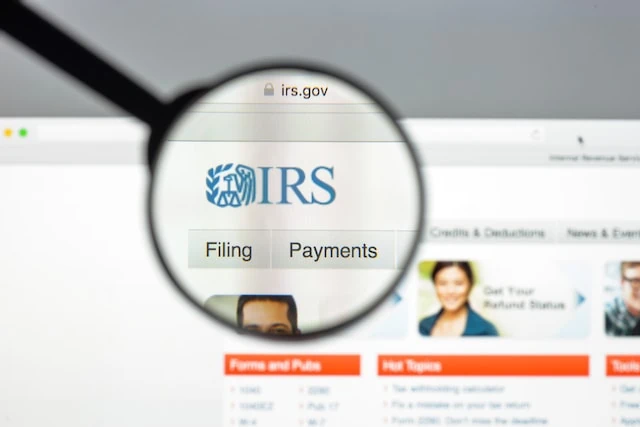Thanks to poverty, natural disasters, war, and a host of other hardships, there are a lot of people in the U.S. and around the world that need comfort and aid. Churches, schools, and other tax-exempt organizations doing good work need your financial assistance, too. So, if you’re a giving person, there’s no shortage of ways to help others. And to encourage charitable giving, the charitable tax deduction rewards you for lending a helping hand.
However, the charitable deduction can be difficult to figure out. For instance, not everyone can deduct charitable contributions, you can only give to certain organizations, and certain limitations apply. There are also some strategies you might be able to use to increase your tax savings.
Since the charitable tax deduction is not as cut and dried as it might seem, I’ve cobbled together a list of the most important twists, turns, and tips for getting the most out of the deduction. Hopefully, this information will help you give to others and cut your tax bill at the same time.
Table of Contents
You Can’t Claim the Standard Deduction and Charitable Tax Deductions On the Same Tax Return
The tax deduction for gifts to charity is only available if you itemize deductions on Schedule A of your federal tax return. You can claim itemized deductions or the standard deduction on your tax return (whichever is higher)—but you can’t claim both. As a result, you can’t claim a tax deduction for charitable donations if you claim the standard deduction.
WealthUp Tip: There used to be a charitable contributions deduction of up to $300 for people who claimed the standard deduction, but it was only a temporary deduction to spur donations during the COVID-19 pandemic. It only applied to cash donations to charity made in 2020 or 2021.
You Can Only Claim the Charitable Deduction for Donations to Certain Charitable Organizations
Only donations to a “qualified organization” are tax deductible. Generally speaking, organizations operated exclusively for charitable, religious, scientific, literary, or educational purposes are qualified for purposes of the charitable contribution deduction.
However, other types of organizations can be a qualified organization, too. For instance, tax deductible donations can generally be made to:
- Organizations that foster national or international amateur sports competition
- Veterans’ organizations
- Fraternal societies, orders, and lodges
- Government entities (e.g., local police or fire departments)
On the other hand, you can’t deduct donations to:
- Civic leagues
- Social and sports clubs
- Labor unions
- Chambers of commerce
- Foreign organizations (except certain Canadian, Israeli, and Mexican charities)
- For-profit groups and organizations
- Lobbyist groups
- Homeowners’ associations
- Political groups
- Candidates for public office
WealthUp Tip: Not sure if your favorite charity is a qualified organization? Don’t worry. The IRS has an online database of organizations eligible to receive tax-deductible donations.
Gifts to individuals directly or through a crowdfunding website (e.g., through a GoFundMe page) generally aren’t tax deductible since they aren’t gifts to a qualifying organization. You also can’t deduct charitable contributions to a qualified organization that are earmarked for use by a specific person.
The value of your time or services provided to a qualified organization aren’t tax deductible, either.
Other payments to qualified organizations that aren’t deductible include:
- Purchases of raffle, bingo, or lottery tickets
- Dues, fees, or bills paid to country clubs, lodges, fraternal orders, or similar groups
- Tuition paid to an educational institution
The Fair Market Value of Donated Property Is Deductible
You can get a tax deduction for donating cash or property to charity. If you give cash, the value of your gift—and, thus, the value of your deduction—is easy to calculate. It’s just the amount of your cash donation.
However, when you donate property (i.e., a non-cash charitable contribution), you have to determine the property’s fair market value (FMV) at the time of the donation to calculate the amount of your deduction. FMV is generally the amount a willing buyer would pay to a willing seller if the property were sold on the open market.
Accurately determining the FMV of property isn’t always easy, though. This is especially true with used clothing and common household items that are frequently donated to charity. People often overvalue these items when claiming charitable deductions. (Clothing and household goods must also be in “good used condition or better” in order to claim the deduction.)
And what if you don’t get the valuation quite right? You could be hit with a special penalty equal to 20% of any tax underpayment of $5,000 or more if you inflate the value of donated property by 150% or more. The penalty jumps to 40% if you inflate the value by at least 200%.
WealthUp Tip: Charities won’t set the value of donated property—that’s your job. However, some charities will help you determine the FMV of donated property. For instance, the Salvation Army has an online donation value guide covering a variety of frequently donated items (they have a phone line for help, too).
Cars, Boats, and Airplanes
If you donate a car, boat, or airplane with a FMV more than $500, you can deduct the smaller of:
- The gross proceeds from the sale of the item by the charitable organization
- The vehicle’s FMV on the date of the contribution
If the charitable organization uses the car, boat, or airplane for its own use, or gives it to someone for free (or a steep discount), then you can generally deduct the FMV of the donated item.
The charitable organization will also send you a Form 1098-C, which you must attach to your tax return.
Related: How Much Is the Gift Tax Exclusion?
You Can’t Receive a Benefit for a Tax-Deductible Donation
If you receive something of value for making a charitable contribution (e.g., food, entertainment, or merchandise), then your deduction will generally be reduced by the value of the benefit.
For example, if you donate $100 to a charity and get invited to the charity’s annual dinner in return. If the value of the meal you receive is $40, then you can deduct $60 ($100 – $40) as a charitable donation.
This limitation also includes donations to colleges and universities in exchange for the right to purchase tickets to sporting events.
In addition, your deduction can be reduced if you receive (or expect to receive) a state or local tax credit for making a charitable contribution. In that case, the value of the tax credit will be subtracted from your allowable deduction. However, if tax credit isn’t more than 15% of your donation, then your charitable deduction isn’t reduced.
Your deduction generally won’t be reduced if you only receive a small item or other “token” benefit for a donation during a fund-raising campaign (e.g., a bookmark, calendar, key chain, mug, poster, tee shirt, etc.).
WealthUp Tip: In most cases, if you donate more than $75 and receive any goods or services in return, the recipient organization must inform you in writing that you can only deduct the amount of your donation that’s more than the value of the goods or services you received.
Out-of-Pocket Expenses for Volunteering Might Be Tax Deductible
You can’t deduct the value of your time or services if you volunteer for a charitable organization. However, you can deduct unreimbursed expenses you paid in connection with your services as long as the expenses are:
- Directly connected with your volunteering
- Incurred only because you volunteered
- Not personal, living, or family expenses
So, for example, if you bake cookies for a church bake sale, you can deduct the cost of the ingredients. On the other hand, if you had to hire a babysitter while you worked at the bake sale, that expense isn’t deductible (it’s a family expense).
Travel expenses related to your volunteer service might also be deductible. If traveling by car, you can deduct either your actual expenses (e.g., gas, oil, etc.) or 14¢ per mile. Parking fees and tolls are also deductible. If traveling away from home, there can’t be a significant amount of personal pleasure, recreation, or vacation-like activities.
Income-Based Limits Can Reduce Charitable Tax Deductions
The deduction for charitable contributions can be capped under a few different income-based scenarios. For instance, cash contributions generally can’t exceed 60% of the taxpayer’s adjusted gross income (AGI) for the tax year. Any cash donations beyond that amount aren’t deductible.
If you donate property (i.e. non-cash contributions) to most types of qualified organizations, any amount over 50% of your AGI for the tax year generally isn’t deductible. However, a special 30% limitation applies to donations of “capital gain property” (i.e., any capital asset that, if sold instead of donated, would have resulted in a long-term capital gain).
If a farmer or rancher donates land for conservation purposes, the charitable deduction is generally limited to 100% of his or her AGI. However, if the donated property is used for (or can be used for) agriculture or livestock production, the property must remain available for such production. If not, the 50% of AGI limit applies.
A 30% of AGI limit applies to non-cash contributions to certain types of qualified organizations, including certain private foundations, veterans organizations, fraternal societies, and cemetery organizations. A 20% limit applies to donations of capital gain property to these types of organizations.
There’s a silver lining to these income-based limitations, though. Any charitable contribution you can’t deduct because it exceeds one of these limits can be carried over and deducted for up to five subsequent tax years (15 years for conservation donations) until it’s completely used.
Related: Best Retirement Plans for 2024
You Must Substantiate Your Charitable Donations
Some additional paperwork might be required to substantiate your charitable tax deduction. The recordkeeping requirements will help you prove the amount of your donations in case you’re audited by the IRS.
First, if you give cash (including donations made by check, electronic funds transfer, credit or debit card, payroll deduction, or gift card), you must obtain and keep either a:
- Bank record (e.g., canceled check, bank or credit card statement, etc.)
- Receipt from the qualified organization that includes the date and amount of your donation
- Payroll record showing the date and amount of any donation withheld from your paycheck (e.g., pay stub, W-2 form, pledge card, etc.)
If you donate at least $250 in cash, you should receive (and must keep) a “contemporaneous written acknowledgment” (CWA) from the recipient organization by Jan. 31 of the year following your donation.
For property donations of $250 or less, make sure you get a receipt or other written acknowledgment from the qualified charity. If that’s not possible (e.g., you drop off your donation at an unattended location), then keep a written record for yourself.
If you donate property worth $250 to $500, you must get and keep a CWA. You must receive it by the earlier of:
- The date you file your return for the year you make the donation
- The due date (including any tax filing extension) for filing the return
For non-cash contributions valued at $500 to $5,000, you must file Form 8283 with your tax return and obtain/keep a CWA.
Property donations worth more than $5,000 require Form 8283, a CWA, and a written appraisal of the donated property from a qualified appraiser.
WealthUp Tip: A CWA must include the amount of a cash donation or a description (but not necessarily the value) of donated property, whether the qualified organization gave you any goods or services in exchange for your donation (other than token items or membership benefits), and a description and estimate of the value of any goods or services provided.
Donating Appreciated Property
Let’s wrap up by going over some strategies for maximizing tax deductions for charitable giving—starting with donating appreciated assets.
Assume you have stock (a capital asset) that has risen in value. You can sell the stock and donate the proceeds to charity, or you can give the stock directly to the charity. Which option is best for you?
Donating appreciated stock that you held for more than one year directly to the charity is the better move in most cases.
For example, if you sell the stock and donate the proceeds, you must pay capital gains tax on the profit. If you held the stock for more than one year before selling it, you’ll have “long-term capital gain.” The capital gains tax rate on your long-term gain will be either 0%, 15%, or 20%, depending on your taxable income.
On the other hand, if you donate the stock directly to a qualified organization, you avoid paying capital gains taxes. Since there’s no “sale” of the stock, the capital gains tax doesn’t apply. Plus, your donation is generally equal to the FMV of the stock on the day you donate it, which means you get a tax deduction for the amount of gain (assuming you otherwise qualify for the charitable deduction).
If using this tactic, remember that your deduction might be limited to 20% or 30% of your AGI since “capital gain property” is being donated (see above). A direct donation also might not be necessary if you’re in the 0% long-term capital gains tax bracket, since you won’t owe any tax upon the sale of the stock anyway.
Things are a little different if you donate appreciated stock that you held for one year or less. If you sell the stock and donate the proceeds, you’ll still owe tax on your “short-term capital gain.” However, the capital gains tax rate will be the same federal tax rate you pay on wages, tips, and other “ordinary” income (10%, 12%, 22%, 24%, 32%, 35%, or 37%).
In addition, if you donate the stock directly to charity, you must reduce your charitable tax deduction by the amount of any short-term capital gain you would realize if you sold the asset for its FMV. This essentially means your deduction is equal to your basis in the stock (i.e., what you paid for it).
Donating Depreciated Property
So, what if you have a capital asset that has lost value? Do you still want to donate it directly to charity? Probably not.
Let’s use another stock example to illustrate the point. This time, the stock’s value has dropped since you bought it. If you donate the stock directly to charity, your deduction is generally limited to its FMV on the date of your donation. As a result, you don’t get any tax benefit for the loss in value.
On the other hand, if you sell the stock and then immediately donate what you get from the sale to charity, you’ll still have a tax deductible donation equal to the stock’s FMV on the date of your donation. However, you’ll also generate a capital loss that you can use to offset any taxable capital gains. You might even be able to deduct up to $3,000 of the loss against your “ordinary” income.
So, if you have depreciated property, it’s probably best to sell it first and then donate the proceeds to charity.
“Bunching” Charitable Donations
If you don’t normally donate enough each year to justify itemizing, but you expect itemized deductions to be close to the standard deduction for the year, you can consolidate two or more years worth of charitable contributions into one year. With this strategy—known as “bunching”—you can at least deduct those gifts in one year, instead of missing out on the deduction for all years.
For example, suppose you’re single and give $10,000 to your alma mater each year. In 2023, you only have $2,000 of other itemized deductions (which is typical for you), for a total of $12,000. Since that’s less than the $13,850 standard deduction for single filers for 2023, you don’t itemize and aren’t able to deduct your $10,000 donation.
However, if you combined your 2023 and 2024 donations into one $20,000 donation in 2023, you’ll have $22,000 of itemized deductions, which is greater than the standard deduction amount. That way, you can itemize and deduct the $20,000 gift (subject to any applicable limitations). You will lose the ability to deduct a $10,000 donation in 2024, but you probably would lose it anyway since your 2024 standard deduction would likely be higher than your total 2024 itemized deductions.
WealthUp Tip: A donor-advised fund can help with bunching. With this type of fund, you can make a single contribution to the account in one year, but have the money distributed to selected charities over the course of several years. You get to claim a charitable deduction for the year that the single contribution to the fund is made.
Qualified Charitable Distributions (QCDs)
While you actually can’t claim the charitable tax deduction when you take a “qualified charitable distribution,” it’s still worth mentioning in case you qualify for this type of transaction.
If you’re at least 70½ years old, you can take a QCD from a traditional IRA each year and have that money go directly to charity. As noted, you can’t claim an itemized deduction for a QCD, but the amount donated isn’t considered taxable income (like other distributions from traditional IRAs). Since it isn’t included in taxable income, it could also lower your “provisional income,” which means you might reduce taxes on your Social Security benefits, too.
For 2023, a QCD can’t be for more than $100,000 ($105,000 for 2024). As part of that amount for one year (and only one year), a QCD of up to $50,000 can be made to a charitable remainder annuity trust, charitable remainder unitrust, or charitable gift annuity ($53,000 for 2024).
WealthUp Tip: QCDs count toward any required minimum distributions for the year, which means seniors can keep more money in their traditional IRA for a longer period of time.
Related: Child Tax Credit FAQs [What Every Parent Needs to Know]

















![Child Tax Credit FAQs [What Every Parent Needs to Know] 25 child tax credit parents kissing baby](https://wealthup.com/wp-content/uploads/child-tax-credit-parents-kissing-baby-600x403.webp)

